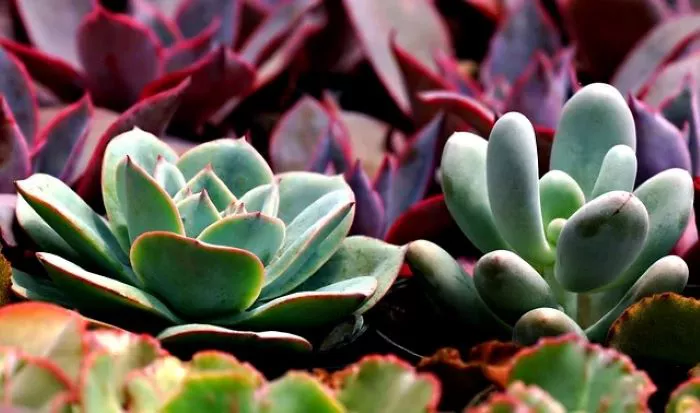Growing succulents from seeds can be a rewarding experience. However, it requires careful attention to watering. Proper watering is crucial for the germination and growth of succulent seeds. In this article, we will explore the best practices for watering succulent seeds. We will cover the necessary steps, techniques, and tips to ensure successful germination and healthy seedlings.
Understanding Succulent Seeds
Succulent seeds are small and delicate. They come from a variety of succulent plants, each with unique characteristics. The seeds require specific conditions to germinate, including the right temperature, light, and moisture levels. Unlike mature succulents, which are drought-tolerant, seeds need consistent moisture to sprout. Understanding the needs of succulent seeds is the first step toward successful propagation.
Preparing the Growing Medium
Before watering succulent seeds, it is essential to prepare the growing medium. The right medium provides the necessary support for germination while allowing for good drainage. Here are some key considerations for preparing the medium.
Choose the Right Soil: Use a well-draining soil mix specifically designed for succulents or cacti. You can also create your own mix by combining regular potting soil with perlite or coarse sand. This will improve drainage and prevent water retention.
Sterilize the Soil: To reduce the risk of disease, sterilize the soil before planting. You can do this by baking it in the oven at 180°F (82°C) for about 30 minutes. Allow the soil to cool before use.
Fill Containers: Fill small pots or seed trays with the prepared soil mix. Leave some space at the top to avoid overflow when watering.
Sowing the Seeds
Once the growing medium is prepared, it is time to sow the seeds. Proper sowing techniques will help ensure good seed-to-soil contact and promote germination.
Even Distribution: Sprinkle the seeds evenly over the surface of the soil. Avoid overcrowding, as this can lead to competition for resources.
Lightly Press: Gently press the seeds into the soil using a flat surface, such as a piece of cardboard. This ensures good contact between the seeds and the soil.
Covering the Seeds: Some succulent seeds require light to germinate, while others benefit from being lightly covered. Research the specific needs of the seeds you are planting. If covering is necessary, use a thin layer of the soil mix.
Watering Techniques
Watering succulent seeds requires a delicate approach. Overwatering can lead to rot, while underwatering can hinder germination. Here are effective techniques for watering succulent seeds.
Use a Spray Bottle: A spray bottle allows for gentle watering. Fill the bottle with water and mist the surface of the soil until it is evenly moist. This method prevents the seeds from being dislodged.
Bottom Watering: Another effective technique is bottom watering. Place the pots or trays in a shallow container filled with water. Allow the soil to absorb moisture from the bottom for about 30 minutes. Remove the pots and let any excess water drain.
Monitor Moisture Levels: Check the moisture level of the soil regularly. The soil should remain consistently moist but not soggy. Use your finger to test the top inch of soil. If it feels dry, it is time to water.
Creating the Right Environment
In addition to proper watering, creating the right environment is crucial for germinating succulent seeds. Here are some factors to consider.
Temperature: Most succulent seeds germinate best at temperatures between 70°F and 80°F (21°C to 27°C). Use a heat mat if necessary to maintain consistent warmth.
Light: Provide bright, indirect light for the seedlings. Direct sunlight can be too harsh for young plants. A grow light can also be used to ensure adequate light levels.
Humidity: Succulent seeds benefit from a humid environment during germination. Cover the pots or trays with a clear plastic lid or plastic wrap to retain moisture. Remove the cover once the seeds have germinated to prevent mold growth.
After Germination Care
Once the seeds have germinated, it is important to adjust your watering practices. The seedlings will have different needs than the seeds. Here are some tips for caring for seedlings.
Gradual Watering: As the seedlings grow, gradually reduce the frequency of watering. Allow the top inch of soil to dry out between waterings. This helps prevent overwatering.
Use a Fine Watering Can: Switch to a fine watering can or a gentle watering method to avoid disturbing the seedlings. Water around the base of the plants rather than directly on them.
Fertilization: Once the seedlings have developed a few sets of true leaves, you can begin to fertilize them. Use a diluted, balanced liquid fertilizer every four to six weeks during the growing season.
Common Challenges and Solutions
While growing succulent seeds can be rewarding, it may come with challenges. Here are some common issues and how to address them.
Mold Growth: Excess moisture can lead to mold growth on the soil surface. To prevent this, ensure good air circulation and avoid overwatering. If mold appears, remove the affected area and reduce humidity.
Slow Germination: Some succulent seeds may take longer to germinate than others. Be patient and continue to provide the right conditions. If seeds do not germinate after several weeks, check their viability.
Leggy Seedlings: If seedlings grow tall and spindly, they may not be receiving enough light. Move them to a brighter location or adjust your grow lights to provide more light.
Conclusion
Watering succulent seeds is a critical aspect of successful propagation. By understanding the needs of the seeds and providing the right conditions, you can promote healthy germination and growth. Use gentle watering techniques, monitor moisture levels, and create a suitable environment. With patience and care, you will enjoy the rewarding experience of growing succulents from seeds. Embrace the journey of propagation and watch your succulent collection flourish.


